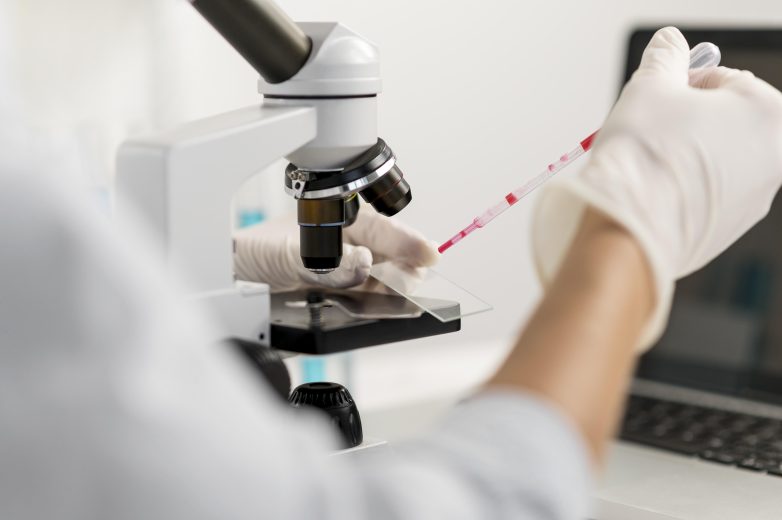Preimplantation genetic testing (PGT) – Everything You Need to Know

In this comprehensive guide, we dive into the world of preimplantation genetic testing (PGT), a cutting-edge treatment add-on designed to improve the outcomes of fertility treatments. We’ll explain what PGT is, explore its various types (including PGT-A, PGT-M, and PGT-SR), and detail how it is performed. The article also compares success rates between IVF with and without PGT, examines cost considerations—particularly in the UK—and addresses key ethical and technical challenges. Whether you’re considering PGT or simply want to learn more, this guide provides clear, evidence-based insights to help you make informed decisions on your fertility journey.
What Is Preimplantation Genetic Testing (PGT)?
Preimplantation genetic testing (PGT) is a specialized genetic testing procedure used during in vitro fertilisation (IVF) or intracytoplasmic sperm injection (ICSI). It involves checking embryos for chromosomal or specific genetic abnormalities before embryo transfer to the womb. By identifying embryos without certain abnormalities in the number of chromosomes or a known genetic condition, PGT can help reduce the chances of miscarriage or having an affected child. It also offers some patients—especially those with failed IVF cycles or a history of miscarriage—improved chances of having a baby (Greco et al., 2020).
Different Types of PGT (PGT-A, PGT-M, PGT-SR)
-
PGT-A (pre-implantation genetic testing for aneuploidy; previously known as PGS): Screens for missing or extra chromosomes (i.e., aneuploidy).
-
PGT-M (known as preimplantation genetic diagnosis or genetic testing for monogenic disorders): Focuses on a specific genetic condition, like sickle cell, to avoid the possibility of passing it on.
-
PGT-SR: A type of PGT used when couple may carry chromosomal rearrangements, such as translocations, which can lead to embryos with missing or extra genetic material.
Why Is PGT Considered a Treatment Add-On?
The HFEA labels PGT (especially PGT-A) as a treatment add-on because it’s not mandatory for all fertility treatment. While it may improve the chances of a successful pregnancy in certain cases (e.g., failed IVF cycle, risk of having a child with a specific genetic condition), there is still ongoing research to provide more definitive evidence to show universal benefit.
How Is PGT Performed?
PGT is performed after embryos are created through IVF or ICSI. Specialists remove a cell sample to identify genetic or chromosomal abnormalities. PGT results guide which embryos for transfer are unaffected, helping to reduce the chances of miscarriage or failed IVF.
Fertility Treatment Prep
-
Ovarian Stimulation: Medications stimulate multiple eggs, with monitoring to avoid complications like ovarian hyperstimulation syndrome.
-
Egg Retrieval: Eggs are collected from the ovaries.
-
Fertilisation: Through in vitro fertilization (vitro fertilisation) or intracytoplasmic sperm injection.
-
Blastocyst Stage: Embryos typically grow to day 5–7 before biopsy.
Embryo Biopsy and Genetic Analysis
-
A small number of cells is removed from each embryo (usually the trophoectoderm).
-
These cells are tested for abnormalities in the number of chromosomes (genetic testing for aneuploidy) or specific genetic mutations.
-
Embryos without significant chromosomal abnormalities are preferred for transfer to the uterus.
Lab Techniques for Pre-implantation Genetic Testing
Common methods include:
-
Next-Generation Sequencing (NGS): Detects pre-implantation genetic testing for aneuploidy, mosaicism, and subtle chromosomal changes.
-
Array CGH or PCR: Useful for detecting large or specific genetic alterations.
-
Results help the clinic and potentially a clinical geneticist or genetic counsellor decide on the best embryos to transfer, aiming to improve success rates and avoid the possibility of an affected child.
Success Rates of PGT
A UK-focused analysis by Theobald, SenGupta, and Harper (2020) found that preimplantation genetic testing (PGT) made up roughly 2% of all IVF cycles performed between 2014 and 2016. Across those 3385 PGT cycles, 1074 babies were born, yielding about a 32% success rate per egg collection. By comparison, standard IVF (i.e., IVF without PGT) in the UK generally showed live birth rates around the mid-20% range per treatment cycle over similar time frames (based on aggregate Human Fertilisation and Embryology Authority [HFEA] data).
Limitations of PGT – Potential Risks and Misdiagnosis
PGT, while promising, has key limitations and risks:
-
Biological Constraints: Mosaicism, variants of unknown significance, and polygenic diseases complicate the accuracy of PGT, potentially leading to misdiagnosis.
-
Incomplete Validation: New PGT applications, such as for polygenic diseases, lack sufficient evidence to ensure reliable use in clinical practice.
-
Ethical Concerns: Expanded testing increases complexity in decision-making, and misunderstandings may result in unnecessary embryo discarding or misinformed choices.
In short, PGT’s potential is hindered by biological challenges, limited validation, and ethical considerations, necessitating further research and clearer guidelines (Kakourou et al., 2024).
Cost Considerations
The cost of Preimplantation Genetic Testing (PGT) varies significantly between countries, with the USA seeing much higher rates than the UK. In the UK, PGT-A is not funded by the NHS and can cost over £3000, while in the USA, the price can reach as much as $12,000. These costs are typically self-funded in the USA due to the more commercial nature of ART there, which contributes to the wider use of add-ons like PGT-A. The differing regulations and funding structures between the UK and the USA result in varying adoption rates, with the UK using PGT in less than 2% of ART cycles, while in the USA, the use of PGT has risen to 21%. The value and efficacy of PGT-A remain debated, with studies showing mixed results regarding its impact on live birth rates (LBR) and miscarriage rates, leading to ongoing discussions about the cost-effectiveness of its routine use in ART (Theobald et al., 2020).
Ready to Explore PGT with Ovoria?
Considering PGT as part of your fertility journey? At Ovoria, we offer personalized guidance on genetic testing options and can help you navigate the complexities of PGT to ensure you make informed decisions. Contact us today to explore how we can support your reproductive health goals with the latest in advanced fertility technologies.
Frequently Asked Questions
Does PGT Improve Overall IVF Success Rates?
PGT may reduce miscarriages and improve embryo selection, but its impact on overall IVF success rates is still debated. Some studies show no significant improvement in live birth rates.
Can PGT Detect All Genetic Conditions?
No, PGT can’t detect all genetic conditions. It’s mainly used for specific genetic disorders, chromosomal abnormalities, and structural rearrangements.
Who Might Consider PGT?
Couples with a risk of genetic conditions, those experiencing recurrent miscarriages, individuals of advanced maternal age, or anyone undergoing IVF may consider PGT. The test helps identify embryos with genetic abnormalities, reducing the risk of passing on inherited diseases, improving the chances of a successful pregnancy, and increasing the likelihood of a healthy baby.
References
Greco, E., Litwicka, K., Minasi, M. G., Cursio, E., Greco, P. F., & Barillari, P. (2020). Preimplantation Genetic Testing: Where We Are Today. International Journal of Molecular Sciences, 21(12), 4381. https://doi.org/10.3390/ijms21124381
Theobald, R., SenGupta, S., & Harper, J. (2020). The status of preimplantation genetic testing in the UK and USA. Human Reproduction, 35(4), 986–998. https://doi.org/10.1093/humrep/deaa034
Kakourou, G., Sofocleous, C., Mamas, T., Vrettou, C., & Traeger-Synodinos, J. (2024). The current clinical applications of preimplantation genetic testing (PGT): acknowledging the limitations of biology and technology. Expert Review of Molecular Diagnostics, 24(9), 767–775. https://doi.org/10.1080/14737159.2024.2390187



